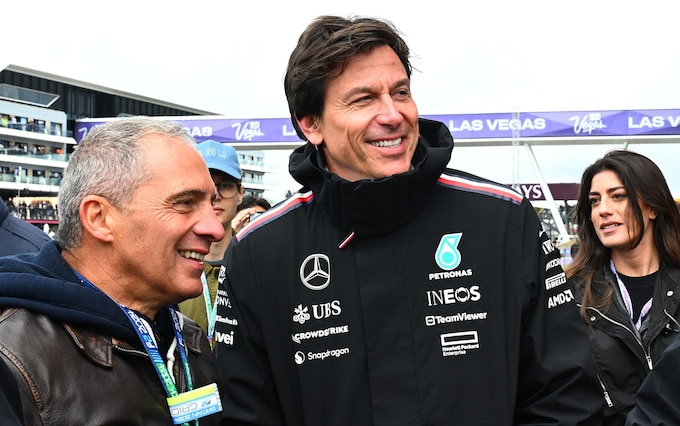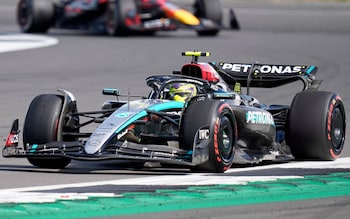

After a difficult two-and-a-bit seasons, Mercedes are finally a consistent winning and competitive force in Formula One again. Following so many false dawns, they have stopped trying to find the magic bullet and have found their direction, winning the last two races – first in Austria and then at Silverstone.
As with McLaren, Mercedes have developed themselves to the front of the grid and into a three-way battle for victories with Red Bull. How have they managed this? With a new front wing.
Now, the front wing of the W15 which was introduced in Monaco would not have suddenly given George Russell and Lewis Hamilton 0.3sec per lap. It is more that the front wing has made the car a more consistent and predictable machine – and that has aided their development direction.
Earlier in the year, Mercedes tried to be very clever with the inboard section of the wing, going to one fewer elements than the regulations allowed you to have – three rather than four. They had a tubular section that mimicked a fourth element.
The problem with this was that the second element was highly angled and this ultimately meant the airflow and the car’s performance were very sensitive to even slight changes in things like temperature, ride height or wind. On a perfect day the car was quick, but there are not too many perfect days in F1. Most of all it was inconsistent and confusing for the drivers.
This in turn led them into making the car worse rather than better throughout a race weekend. They often “optimised” themselves into a problem. Once that happens, correct development decisions are not easy to achieve. Looking to find that magic bullet is the main reason for the team’s struggles since 2022.
There might not have been great numbers for the new front wing in the wind tunnel, but with a more fundamental design, the car has started to respond on track and the optimisation on a race weekend is genuine. In some ways, it does not matter entirely if a new part finds you lap time or not but you need to know whether the effect is positive or negative. With the inconsistent car they had previously, Mercedes struggled to get a read on what was happening.

Fixing this has alerted them to how to develop the rest of the car, too. As I wrote about McLaren’s upgrades in May, the front wing is critical because it sets up an airflow structure that the rest of the car has to work with. Over time, you then make the decisions that find you time rather than losing it. It is both less confusing for the team and drivers at a race and for the development team back at base.
Mercedes’ recent results are an enormous step forward. Before Canada they had just one start on the front two rows and averaged 9.8 points per round. Since Montreal they have secured six front row starts and average 31.25 points per round, even with Russell’s retirement on Sunday. I do not think they have finished progressing, either. The regulations for 2025 are a continuation of what is currently in place so I’m pretty confident they will continue to make small gains.
There is a chance that they could regress but the team have been through enough low points in the last two years to ensure they dot the Is and cross the Ts before bringing anything questionable to the track. I no longer see them going down the wrong development path.
That said, it is possible with these current ground-effect cars to develop yourself into a hole as you seek downforce but find unpredictability. Ferrari, for example, appear to have gone down the wrong path, with bouncing and porpoising rearing its ugly head again.
Red Bull have made very little progress throughout the season, winning just three of the last seven grands prix, having won 25 of the previous 27. They need to regroup and quickly otherwise the battle for the constructors’ title between themselves, McLaren and Mercedes will get very intense as the season progresses.
It appears that, finally, Mercedes have learnt the right lessons. With two fantastic drivers at their disposal it is another reason why Red Bull have been put under the type of pressure they have not experienced since 2021.

Crucial change that turned Mercedes into an F1 force again
New front wing has brought consistency to the W15, allowing team to make real and telling development resulting in back-to-back race wins